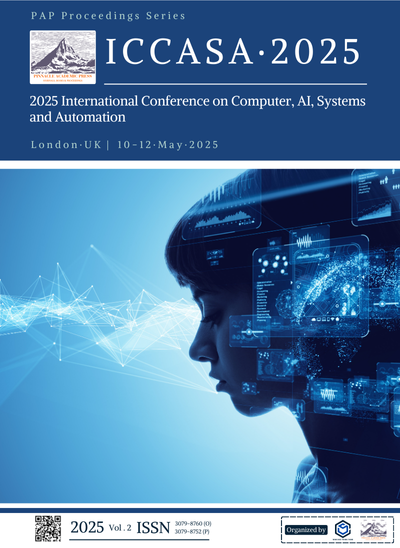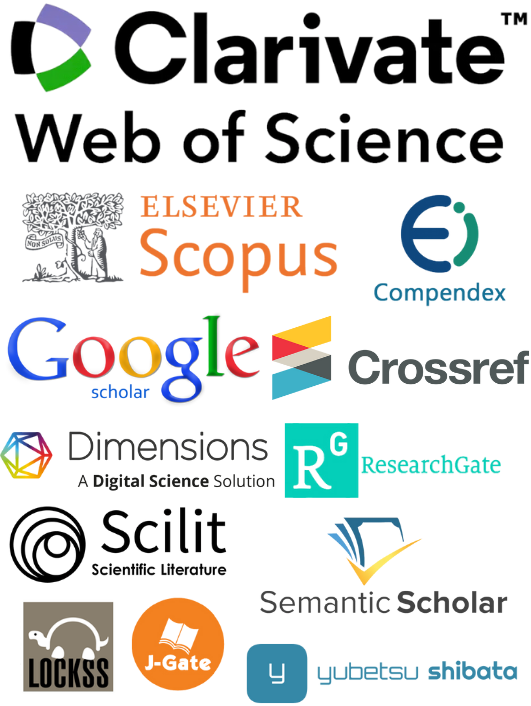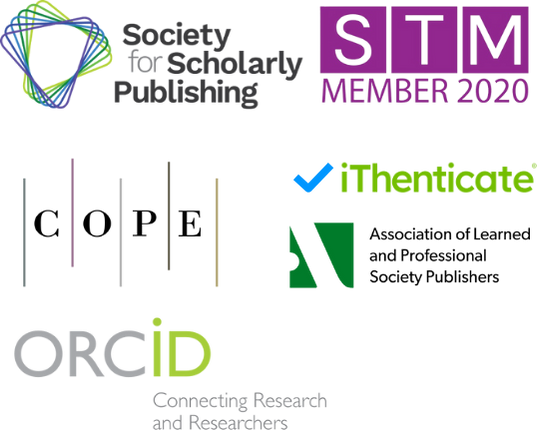LLM-Enhanced Cultural Sensitivity Detection in Games Localization: A Comparative Framework for Multimedia Content
Keywords:
Large Language Models, cultural sensitivity, games localization, comparative assessment frameworkAbstract
This research explores the innovative application of Large Language Models (LLMs) in quality assessment of games and multimedia content localization, with a specific focus on the effectiveness of cultural sensitivity detection. Based on the author's localization production experience at Blizzard Entertainment, the study designs a comparative evaluation framework to analyze the differences between LLM-assisted and traditional human quality assessment methods in identifying culture-specific elements, idioms, and emotional connotations. Through case studies, the research compares the performance of human evaluation, existing automation tools, and LLM-assisted assessment in games, video, and marketing content, particularly emphasizing their application value in non-standard language outsourcing pipelines. The methodology integrates data analysis techniques with localization quality management principles, leveraging the researcher's expertise in translation technology and Tableau business intelligence analysis tools to develop evaluation metrics that quantify LLM effectiveness in cross-cultural communication. By analyzing LLM capabilities in identifying cultural nuances, this study aims to provide practical quality management tools for international digital content producers, thereby enhancing the effectiveness of global content strategies. This research holds significant implications for enhancing global competitiveness in the digital entertainment market. As gaming and digital media companies expand their international influence, precise cross-cultural content adaptation has become a critical competitive factor. The research outcomes will help enterprises more effectively communicate cultural values, enhance leadership in the global digital content market, and provide technical support for international cooperation and cultural exchange through digital content. Simultaneously, the innovative localization quality assessment framework will strengthen America's technological advantages in AI applications and langue.
References
1. J. R. Kunst and K. Bierwiaczonek, “Utilizing AI questionnaire translations in cross-cultural and intercultural research: Insights and recommendations,” Int. J. Intercult. Relat., vol. 97, p. 101888, Nov. 2023, doi: 10.1016/j.ijintrel.2023.101888.
2. C. Jiang, G. Jia, and C. Hu, “AI-Driven Cultural Sensitivity Analysis for Game Localization: A Case Study of Player Feedback in East Asian Markets,” Artif. Intell. Mach. Learn. Rev., vol. 5, no. 4, pp. 26–40, Oct. 2024, doi: 10.69987/AIMLR.2024.50403.
3. B. DaCosta and C. Kinsell, “Serious games in cultural heritage: A review of practices and considerations in the design of loca-tion-based games,” Educ. Sci., vol. 13, no. 1, p. 47, Dec. 2022, doi: 10.3390/educsci13010047.
4. G. Rao, C. Ju, and Z. Feng, “AI-Driven Identification of Critical Dependencies in US-China Technology Supply Chains: Impli-cations for Economic Security Policy,” J. Adv. Comput. Syst., vol. 4, no. 12, pp. 43–57, 2024, doi: 10.69987/JACS.2024.41204.
5. X. Jiang, W. Liu, and B. Dong, “FedRisk: A Federated Learning Framework for Multi-institutional Financial Risk Assessment on Cloud Platforms,” J. Adv. Comput. Syst., vol. 4, no. 11, pp. 56–72, 2024, doi: 10.69987/JACS.2024.41105.
6. X. Jia, C. Hu, and G. Jia, “Cross-modal Contrastive Learning for Robust Visual Representation in Dynamic Environmental Conditions,” Acad. J. Nat. Sci., vol. 2, no. 2, pp. 23–34, 2025, doi: 10.70393/616a6e73.323833.
7. G. Cai, X. Wei, and Y. Li, "Privacy‐preserving CNN feature extraction and retrieval over medical images," Int. J. Intell. Syst., vol. 37, no. 11, pp. 9267–9289, 2022, doi: 10.1002/int.22991.
8. X. Xiao, H. Chen, Y. Zhang, W. Ren, J. Xu, and J. Zhang, “Anomalous Payment Behavior Detection and Risk Prediction for SMEs Based on LSTM-Attention Mechanism,” Acad. J. Sociol. Manag., vol. 3, no. 2, pp. 43–51, 2025, doi: 10.70393/616a736d.323733.
9. X. Xiao, Y. Zhang, H. Chen, W. Ren, J. Zhang, and J. Xu, “A Differential Privacy-Based Mechanism for Preventing Data Leakage in Large Language Model Training,” Acad. J. Sociol. Manag., vol. 3, no. 2, pp. 33–42, 2025, doi: 10.70393/616a736d.323732.
10. C. Chen, Z. Zhang, and H. Lian, “A Low-Complexity Joint Angle Estimation Algorithm for Weather Radar Echo Signals Based on Modified ESPRIT,” J. Ind. Eng. Appl. Sci., vol. 3, no. 2, pp. 33–43, 2025, doi: 10.70393/6a69656173.323832.
11. W. Ren, X. Xiao, J. Xu, H. Chen, Y. Zhang, and J. Zhang, “Trojan Virus Detection and Classification Based on Graph Convolu-tional Neural Network Algorithm,” J. Ind. Eng. Appl. Sci., vol. 3, no. 2, pp. 1–5, 2025, doi: 10.70393/6a69656173.323735.
12. C. Zhang, “An overview of cough sounds analysis,” in Proc. 5th Int. Conf. Frontiers Manuf. Sci. Meas. Technol. (FMSMT), Atlantis Press, 2017, pp. 703–709, doi: 10.2991/fmsmt-17.2017.138.
13. D. Ma, M. Shu, and H. Zhang, "Feature selection optimization for employee retention prediction: A machine learning approach for human resource management," Preprints, Apr. 2025, doi: 10.20944/preprints202504.1549.v1.
14. M. Li, D. Ma, and Y. Zhang, “Improving Database Anomaly Detection Efficiency Through Sample Difficulty Estimation,” Preprints, Apr. 2025, doi: 10.20944/preprints202504.1527.v1.
15. K. Yu, Y. Chen, T. K. Trinh, and W. Bi, “Real-Time Detection of Anomalous Trading Patterns in Financial Markets Using Gen-erative Adversarial Networks,” Preprints, Apr. 2025, doi: 10.20944/preprints202504.1591.v1.
16. W. Wan, L. Guo, K. Qian, and L. Yan, “Privacy-Preserving Industrial IoT Data Analysis Using Federated Learning in Mul-ti-Cloud Environments,” Appl. Comput. Eng., vol. 141, pp. 7–16, 2025, doi :10.54254/2755-2721/2025.21395.
17. Z. Wu, Z. Zhang, Q. Zhao, and L. Yan, “Privacy-preserving financial transaction pattern recognition: A differential privacy approach,” Preprints, Apr. 2025, doi: 10.20944/preprints202504.1583.v1.
18. G. Rao, S. Zheng, and L. Guo, “Dynamic Reinforcement Learning for Suspicious Fund Flow Detection: A Multi-layer Transac-tion Network Approach with Adaptive Strategy Optimization,” Appl. Comput. Eng., vol. 145, pp. 1–11, 2025, doi: 10.20944/preprints202504.1440.v1.
19. W. Lan, L. Yan, J. Weng, and D. Ma, "Enhanced transformer-based algorithm for key-frame action recognition in basketball shooting," Preprints, Mar. 2025, doi: 10.20944/preprints202503.1364.v1.
20. Y. Wang, W. Wan, H. Zhang, C. Chen, and G. Jia, "Pedestrian trajectory intention prediction in autonomous driving scenarios based on spatio-temporal attention mechanism," in Proc. 2024 4th Int. Conf. Electron. Inf. Eng. Comput. Commun. (EIECC), Dec. 2024, pp. 1519–1522, doi: 10.1109/EIECC64539.2024.10929534.
21. J. Xu, H. Chen, X. Xiao, M. Zhao, and B. Liu, “Gesture Object Detection and Recognition Based on YOLOv11,” Appl. Comput. Eng., vol. 133, pp. 81–89, 2025, doi :10.54254/2755-2721/2025.20604.
22. H. Chen, Z. Shen, Y. Wang, and J. Xu, "Threat detection driven by artificial intelligence: Enhancing cybersecurity with machine learning algorithms," World J. Innov. Mod. Technol., vol. 7, no. 5, 2024, doi: 10.53469/wjimt.2024.07(06).09.
23. X. Liang and H. Chen, “A SDN-Based Hierarchical Authentication Mechanism for IPv6 Address,” in Proc. IEEE Int. Conf. Intel-ligence Security Informatics (ISI), Jul. 2019, pp. 225–225, doi :10.1109/ISI.2019.8823463.
24. X. Liang and H. Chen, “HDSO: A High-Performance Dynamic Service Orchestration Algorithm in Hybrid NFV Networks,” in Proc. IEEE 21st Int. Conf. High Perform. Comput. Commun.; IEEE 17th Int. Conf. Smart City; IEEE 5th Int. Conf. Data Sci. Syst. (HPCC/SmartCity/DSS), Aug. 2019, pp. 782–787, doi: 10.1109/HPCC/SmartCity/DSS.2019.00115.
25. H. Chen and J. Bian, “Streaming Media Live Broadcast System Based on MSE,” J. Phys. Conf. Ser., vol. 1168, no. 3, p. 032071, Feb. 2019, doi: 10.1088/1742-6596/1168/3/032071.
26. Z. Ke, S. Zhou, Y. Zhou, C. H. Chang, and R. Zhang, “Detection of AI Deepfake and Fraud in Online Payments Using GAN-Based Models,” 2025, arXiv preprint arXiv:2501.07033, doi: 10.48550/arXiv.2501.07033.
27. Q. Yu, Z. Ke, G. Xiong, Y. Cheng, and X. Guo, "Identifying money laundering risks in digital asset transactions based on AI algorithms," in Proc. 2024 4th Int. Conf. Electron. Inf. Eng. Comput. Commun. (EIECC), Dec. 2024, pp. 1081–1085, doi: 10.1109/EIECC64539.2024.10929087.
28. Z. Ke, J. Xu, Z. Zhang, Y. Cheng, and W. Wu, “A Consolidated Volatility Prediction with Back Propagation Neural Network and Genetic Algorithm,” 2024, arXiv preprint arXiv:2412.07223, 2024, doi: 10.48550/arXiv.2412.07223.
29. X. Xiao, Y. Zhang, H. Chen, W. Ren, J. Zhang, and J. Xu, “A Differential Privacy-Based Mechanism for Preventing Data Leakage in Large Language Model Training,” Acad. J. Sociol. Manag., vol. 3, no. 2, pp. 33–42, 2025, doi: 10.70393/616a736d.323732.
30. X. Xiao, H. Chen, Y. Zhang, W. Ren, J. Xu, and J. Zhang, “Anomalous Payment Behavior Detection and Risk Prediction for SMEs Based on LSTM-Attention Mechanism,” Acad. J. Sociol. Manag., vol. 3, no. 2, pp. 43–51, 2025, doi:10.70393/616a736d.323733.
31. S. Michael, E. Sohrabi, M. Zhang, S. Baral, K. Smalenberger, A. Lan, and N. Heffernan, “Automatic Short Answer Grading in College Mathematics Using In-Context Meta-learning: An Evaluation of the Transferability of Findings,” in Proc. Int. Conf. Artif. Intell. Educ. (AIED), Jul. 2024, pp. 409–417. ISBN: 9783031643156.
32. H. McNichols, M. Zhang, and A. Lan, “Algebra Error Classification with Large Language Models,” in Proc. Int. Conf. Artif. Intell. Educ. (AIED), Jun. 2023, pp. 365–376. ISBN: 9783031362729.
33. M. Zhang, N. Heffernan, and A. Lan, “Modeling and Analyzing Scorer Preferences in Short-Answer Math Questions,” 2023, arXiv preprint arXiv:2306.00791, doi: 10.48550/arXiv.2306.00791.
34. M. Zhang, Z. Wang, Z. Yang, W. Feng, and A. Lan, “Interpretable Math Word Problem Solution Generation via Step-by-Step Planning,” 2023, arXiv preprint arXiv:2306.00784, doi: 10.48550/arXiv.2306.00784.
35. M. Zhang, S. Baral, N. Heffernan, and A. Lan, “Automatic Short Math Answer Grading via In-Context Meta-Learning,” 2022, arXiv preprint arXiv:2205.15219, doi: 10.48550/arXiv.2205.15219.
36. Z. Wang, M. Zhang, R. G. Baraniuk, and A. S. Lan, “Scientific Formula Retrieval via Tree Embeddings,” in Proc. IEEE Int. Conf. Big Data, Dec. 2021, pp. 1493–1503, doi: 10.1109/BigData52589.2021.9671942.
37. M. Zhang, Z. Wang, R. Baraniuk, and A. Lan, “Math Operation Embeddings for Open-Ended Solution Analysis and Feedback,” arXiv preprint arXiv:2104.12047, 2021, doi: 10.48550/arXiv.2104.12047.
38. D. Qi, J. Arfin, M. Zhang, T. Mathew, R. Pless, and B. Juba, “Anomaly Explanation Using Metadata,” in Proc. IEEE Winter Conf. Appl. Comput. Vis. (WACV), Mar. 2018, pp. 1916–1924, doi: 10.1109/WACV.2018.00212.
39. M. Zhang, T. Mathew, and B. Juba, “An Improved Algorithm for Learning to Perform Exception-Tolerant Abduction,” in Proc. AAAI Conf. Artif. Intell., Feb. 2017, vol. 31, no. 1, doi: 10.1609/aaai.v31i1.10700.
Downloads
Published
Issue
Section
License
Copyright (c) 2025 Chenwei Zhang, Chaoyue Jiang, Pengfei Li (Author)

This work is licensed under a Creative Commons Attribution 4.0 International License.



